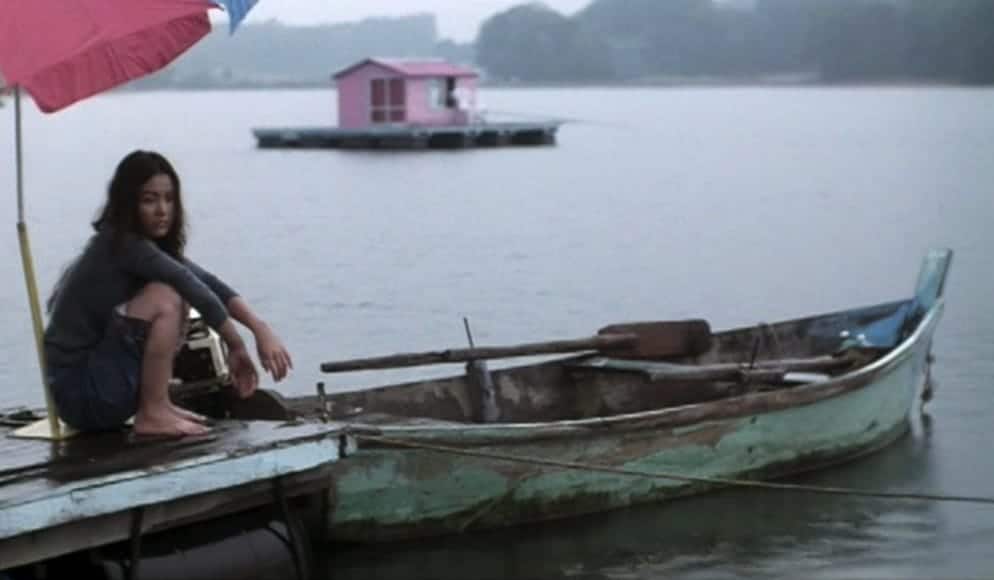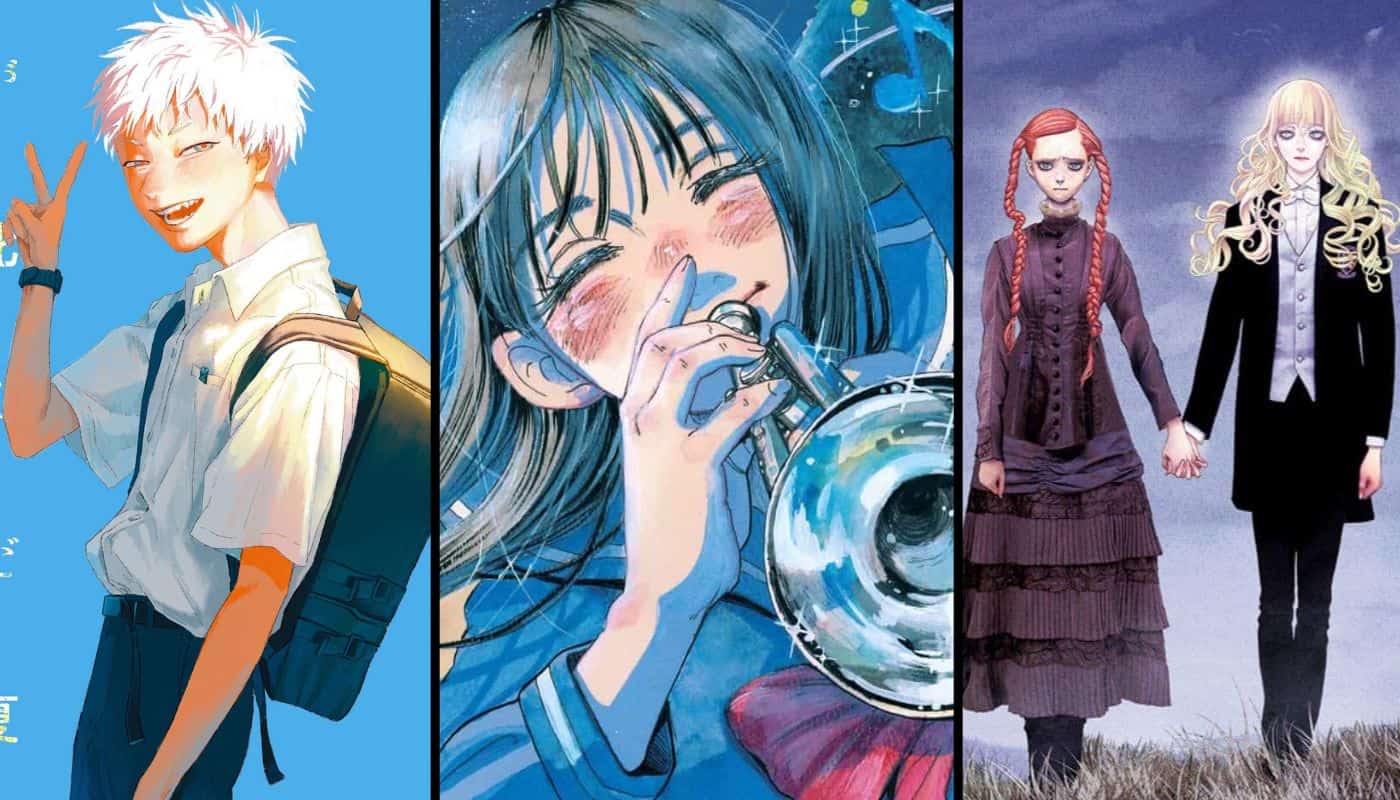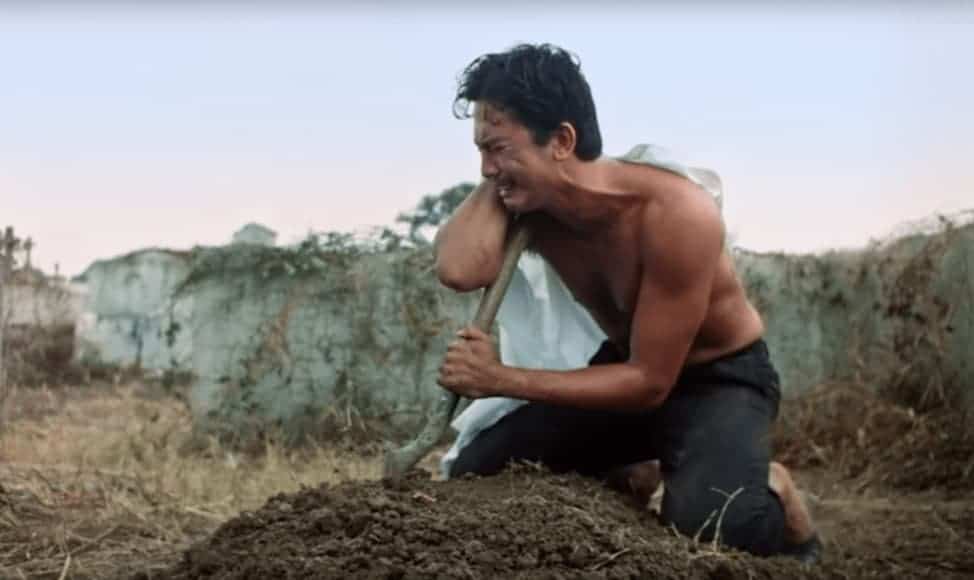Let us now examine some of the traits and patterns that led a number of individuals and organizations to criticize him severely, almost from the beginning of his career.
Kim Ki-duk never turned away from violence in his films. On the contrary, he embraced it fully, even managing to give it lyrical proportions at times. The most “moderate” of his films just feature severe beatings, usually against women, as is the case with “Birdcage Inn”, “3-Iron”, and “Bad Guy”. However, there are others where this trait reaches its most extremes. The scene with the fishhooks in “The Isle” is a distinct example, while the majority of “Pieta” and particularly “Moebius” move in this direction. The scenes with the amputations in both of the aforementioned films, although radically different in context, are realistically grotesque and the most distinct examples of this tendency in Kim's filmography. Lastly, another example of extreme violence is “Address Unknown” with the violence exercised against dogs, and in the case of Chang Guk and his mother, towards parents.
In most Kim Ki-duk's films, women are portrayed as prostitutes. In “The Isle”, Hee-jin is also a prostitute apart from the hotel manager; the main theme “Bad Guy” is actually prostitution, while the protagonist of “Birdcage Inn” also works in the “field”. However, the film that goes furthest is “Samaritan Girl”, where the protagonist is an underage prostitute who has deified her tactics, since she has identified herself with an Indian prostitute named Vasumitra, whose clients became devout Buddhists, according to the legend.
The tendency to shock is one of the most obvious in Kim Ki-duk's filmography, and he cultivated it in a continuously growing degree until its apogee, in “Moebius”. This element usually derives from extreme violence or sex, although it is not limited to these. Kim manages to shock all the senses, while surpassing the sensitivities of most audiences.
Furthermore, the fact that the shock frequently appears among scenes and images of beauty and lyricism, makes its impact even more intense. Lastly, on most occasions, Kim managed to offend different social groups, particularly feminists and animal lovers.

In “Pieta”, the whole concept of the poor shop owners forced to amputate in order for the loan shark to receive the insurance money, is truly shocking. The film, however, does not stop there as it includes cannibalism, animal cruelty, incest and suicide, and almost every notion considered despicable.
This trait finds its apogee in “Moebius”, even from the initial scene, with the castration of the son's penis by his mother, who even proceeds to swallow it. Apart from that, the film includes scenes of self-mutilation during sex, misogynism, and Oedipal complexes, with the last notion becoming even stronger by the fact that Kim has the same actress, Lee Eun-woo, playing both the mother and the lover of the son.
On the other hand, and although these are the traits that have come to define Kim Ki-duk, they are not the only ones, while one could argue that their use is often implemented for other reasons. For example, Kim uses prostitution in order to present the harsh clash distinctions in Korean society, and particularly the one regarding male domination over women. Furthermore, prostitution also shows the brutality of the world, which, according to Kim, is ugly and evil, while people are either monsters or victims. His tendency to shock also has narrative value as in the case of the scene where Han-ki finally speaks in “Bad Guy”, with his squeaky voice having a stupefying impact on the spectator. In “Pieta”, the amputations actually present a harsh critique towards capitalism and its practice.

Furthermore, despite their evident low budget, Kim Ki-duk's films always included images of astonishing beauty. This fact is exemplified particularly in four films. In “Time”, in surrealistic fashion, with the unusual sculptures on the beach, and particularly the one with the ladder between the hands. In “Spring, Summer, Autumn, Winter… and Spring”, with the depiction of the lake during the four seasons, and particularly during the winter, when it is frozen. In “The Bow”, the various images of the sea and particularly the one where the girl is hanging from a swing on the side of the boat, in front of a Buddhist painting. In “The Isle”, the general concept with the little rooms floating in the lake is very beautiful as it is unique.
Lastly, a number of his narratives are truly original. In “Samaritan Girl”, for example, about 40 minutes into the film, the narrative undergoes a radical shift in the point of view, as Yong-gi, Yon-jin's father, becomes the central character, totally changing the perspective of the film, as, up to that moment, it derived from the way the girls watched the world. Furthermore, in the last chapter titled Sonata, the narrative changes once more from the thriller it has become, as father and daughter take a trip together in the remote countryside, where he teaches her to drive. In “3-Iron”, the narrative also changes twice. Initially, it portrays Tae-suk's strange tendencies towards other people's houses, then it goes on to life in prison, and then, in surrealistic fashion, the common life of the three characters inside the house. The most erratic and illogical narrative, however, occurs in “Stop”, although this time, it does not arrive at any concrete or even logical conclusions.
All of the above, inevitably, bring us to the big questions. Should Kim Ki-duk be remembered as a true auteur, a master of cinema or as a man who assaulted his actresses repeatedly? Does the artistic result, as great as it is, justify the means? Should the artist be separated from the human? For this writer, the answer, particularly for the last question, is a clear yes. That Kim Ki-duk may have been an awful human being does not mean that his cinematic work should be erased from memory, and furthermore, I do not even want to think the repercussions of putting movies in black lists due to the “sins” of their creators. Even more so, I feel that it is completely unfair
that anyone who still enjoys his films should be the target of accusation as a sympathizer of rapists or any of the crazy comments that circulated the internet following the director's death. Furthermore, these films were not just Kim Ki-duk's but also the works of the cast and crew. Why should the protagonists of “3-Iron” for example, should have their work thrown in a black hole just because Kim Ki-duk did what he did?
Condemning the work due to the creator's nature seems no different from condemning children for what their parents did. Just as a bad film should not be judged as great just because the filmmaker is a great man, so does the opposite apply. The truth remains that no matter how despicable he was, a number of his movies were exquisite, and their importance for the place Korean cinema now holds in the world roughly as important as the work of Bong Joon-ho or Park Chan-wook. Was he an awful human being? Probably yes. Was he a true master? Yes again. And that is the bottom line: Condemn the man, not the work.














great
I enjoy watching all his movies. They are all masterpiece to me. R.I.P. Mr Kim.